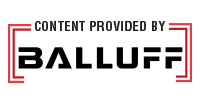
Standard industrial sensors can solve a lot of automation challenges. Photoelectric, capacitive, and inductive technologies detect presence, distances, shapes, colors, thicknesses, and more. To satisfy these general applications, there are a few reputable manufacturers in the market that design and produce such products. In many instances, it is possible to interchange them from manufacturer to manufacturer, due to similar mounting patterns, technical specifications, connectors, and even common pin assignments.
But some applications require more precision – where standard sensors will not do. Some examples include:
- The target may be too small or difficult material to detect
- The target may move very slowly, or very quickly
- The target may have a minimal displacement, as in valve feedback
- The sensor must have low mass, for high-acceleration applications
- The sensor location has severe space constraints or material constraints
Applications that must detect particles that can’t be seen with the naked eye, or something as small as sensing the thin edge of a silicon wafer or the edge of a clear glass microscope slide, require sensors with exceptional precision.
Many precision sensing applications require a custom-designed sensor to meet the customer’s expectations. These expectations typically involve a quality sensor with robust attributes, likely coupled with difficult design parameters, such as high switch-point repeatability, exceptional temperature stability, or exotic materials.
What constitutes a precision sensing application? Let’s take a look.
Approximately 70% of all medical decisions are based on lab results. Our doctors are making decisions about our health based on these test outcomes. Therefore, accurate, trustworthy results, performed quickly, are priorities. Many tests rely on pipetting, the aspirating and dispensing of fluids – sometimes at a microscale level – from one place to another. Using a manual pipette is a time-consuming, labor-intensive process. Automating this procedure reduces contamination and eliminates human errors.
To satisfy the requirements of an application such as this requires a custom-manufactured LED light source, with a wavelength chosen to best interact with the fluids, and an extremely small, concentrated light emission that approaches laser-like properties (yet without the expense and power requirements of the laser). This light source verifies pipette presence and dispensing levels, with a quality check of the fluids dispensed down to the nanoliter scale.
So, the next time you face an application challenge that cannot be tackled with a standard sensor, consider a higher precision sensor and rest assured you will get the reliability you demand.
